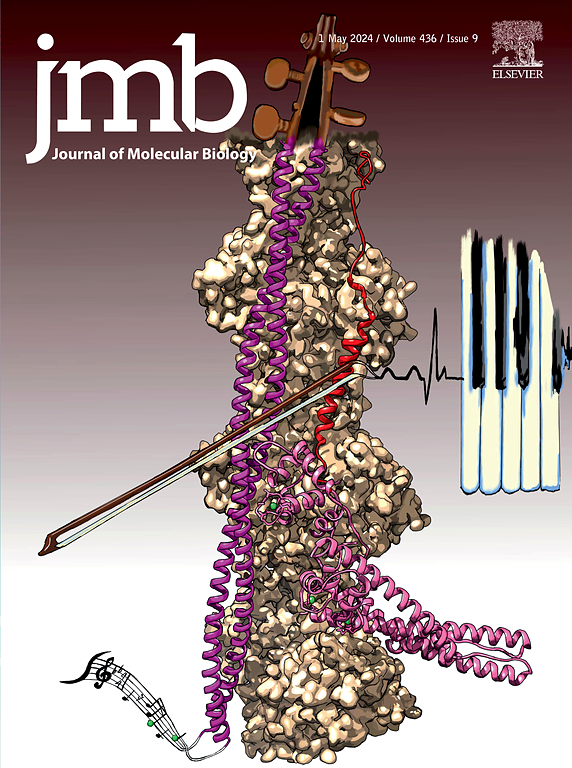IA型拓扑异构酶的构象改变促进了链的通过。
IF 4.5
2区 生物学
Q1 BIOCHEMISTRY & MOLECULAR BIOLOGY
引用次数: 0
摘要
IA型拓扑异构酶存在于所有生命体中,在基本的细胞过程中负责简化扭转紧张的DNA结构。这种简化的常见模型是基于完整DNA链通过另一条DNA链的瞬时切割的概念。这个过程需要蛋白质经历几次构象变化。在这篇综述中,我们讨论了从DNA结合到蛋白质介导的DNA门的打开和关闭,在整个链传递周期中的构象变化。我们还研究了这些酶的不同c端结构域在链传递过程中的参与以及该领域当前的开放问题。本文章由计算机程序翻译,如有差异,请以英文原文为准。
Conformational Changes in Type IA Topoisomerases Facilitate Strand Passage.
Type IA topoisomerases are present in all kingdoms of life and are responsible for simplifying torsionally strained DNA structures during fundamental cellular processes. The common model for this simplification is based upon the concept of passage of an intact DNA strand through a transient cut in another single DNA strand. This process requires the protein to undergo several conformational changes. In this review, we discuss these conformational changes across the strand passage cycle from DNA binding through opening and closing of a protein mediated DNA gate. We also examine the involvement of the diverse C-terminal domains of these enzymes during strand-passage and current open questions in the field.
求助全文
通过发布文献求助,成功后即可免费获取论文全文。
去求助
来源期刊

Journal of Molecular Biology
生物-生化与分子生物学
CiteScore
11.30
自引率
1.80%
发文量
412
审稿时长
28 days
期刊介绍:
Journal of Molecular Biology (JMB) provides high quality, comprehensive and broad coverage in all areas of molecular biology. The journal publishes original scientific research papers that provide mechanistic and functional insights and report a significant advance to the field. The journal encourages the submission of multidisciplinary studies that use complementary experimental and computational approaches to address challenging biological questions.
Research areas include but are not limited to: Biomolecular interactions, signaling networks, systems biology; Cell cycle, cell growth, cell differentiation; Cell death, autophagy; Cell signaling and regulation; Chemical biology; Computational biology, in combination with experimental studies; DNA replication, repair, and recombination; Development, regenerative biology, mechanistic and functional studies of stem cells; Epigenetics, chromatin structure and function; Gene expression; Membrane processes, cell surface proteins and cell-cell interactions; Methodological advances, both experimental and theoretical, including databases; Microbiology, virology, and interactions with the host or environment; Microbiota mechanistic and functional studies; Nuclear organization; Post-translational modifications, proteomics; Processing and function of biologically important macromolecules and complexes; Molecular basis of disease; RNA processing, structure and functions of non-coding RNAs, transcription; Sorting, spatiotemporal organization, trafficking; Structural biology; Synthetic biology; Translation, protein folding, chaperones, protein degradation and quality control.
 求助内容:
求助内容: 应助结果提醒方式:
应助结果提醒方式:


